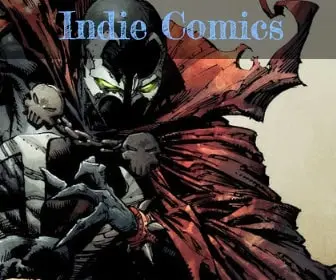
Marvel’s Cybernetic Soldier: Deathlok
Since his inception in the early 1970s, the character of Deathlok has fascinated readers with a blend of dystopian future warfare, cybernetic enhancement, and the eternal struggle of man versus machine. Originally introduced in “Astonishing Tales” #25, Deathlok has become a cult classic, weaving through the Marvel Universe in various iterations, each representing a stark commentary on the nature of war, identity, and humanity.

From Luther Manning to Modern Marvel: The Origins of Deathlok
The original Deathlok, Luther Manning, hails from a post-apocalyptic future. Manning, a soldier who fell in battle, was reanimated as a cyborg with a human brain, computer targeting systems, and a body that was more machine than man. His struggle to retain his humanity while navigating a war-torn world captured the imagination of readers, serving as a mirror to the increasingly technologically entangled society of the time.
The Many Faces of Deathlok
Over the years, the mantle of Deathlok has been passed to several characters, each with their own stories and challenges:
- Michael Collins, a pacifist computer programmer who found his mind trapped in a weaponized cyborg body, highlighted issues of autonomy and the ethics of artificial intelligence.
- Henry Hayes, a medic whose Deathlok persona was a secret even to himself, was a commentary on drone warfare and the involuntary nature of his cybernetic conscription.
- John Kelly, later known as Siege, brought forth the narrative of a government project gone awry, underscoring themes of control and militarization.
Each iteration of Deathlok shares common threads — the battle between programming and free will, the utilization of cybernetic abilities for espionage and warfare, and a quest for redemption and understanding.
Deathlok’s Cultural Impact
Deathlok’s influence extends beyond the pages of comics. He has appeared in animated series, video games, and even the live-action television show “Agents of S.H.I.E.L.D.,” where the character of Mike Peterson adopts the Deathlok persona, echoing the story’s theme of transformation and identity crisis.
Deathlok and the Marvel Universe
Deathlok’s integration into the mainstream Marvel Universe has seen him cross paths with many heroes and villains. Whether it’s teaming up with the Avengers, clashing with Wolverine, or embarking on time-traveling escapades with Cable, Deathlok has made an indelible mark on the superhero community. He represents a possible future, a warning of what may come, and the enduring question of what it means to be human.
The Future of Deathlok
As technology continues to advance and ethical questions surrounding artificial intelligence and cybernetic enhancement become increasingly relevant, Deathlok remains a poignant character. Future writers and artists are likely to delve deeper into these themes, pushing the boundaries of the character’s rich narrative potential.
Deathlok serves as a complex mirror of our own reality, a juncture where science fiction meets uncomfortable truth, and continues to be a testament to Marvel’s ability to adapt its characters to the evolving conversations of the day.
Collectors
Here are the top 5 comic book issues that should be in every Deathlok collection:
- Astonishing Tales #25 (1974)
- The very first appearance of Deathlok (Luther Manning) is a must-have for collectors. Created by Rich Buckler and Doug Moench, this issue kicks off the dystopian future narrative and introduces the world to the complex character of Deathlok.
- Deathlok #1 (1990)
- This series reboot introduced Michael Collins, the pacifist who becomes Deathlok, offering a fresh take on the character and examining themes of identity and morality. It’s the beginning of Collins’ journey and an important piece of Deathlok lore.
- Captain America #286-288 (1983)
- These issues are key for showing a significant crossover with mainstream Marvel characters, featuring Deathlok’s encounters with Captain America and Wolverine. The storyline delves into Deathlok’s origins and his struggle between programming and free will.
- Deathlok (Vol. 2) #1-4 (1991)
- This four-issue miniseries is important as it gives a deeper look into Michael Collins’ struggle with being Deathlok. It explores his quest to reclaim his humanity and the complex interaction between his consciousness and the Deathlok computer.
- Original Sins #1 (2014)
- For a more modern take, this issue introduces Henry Hayes, the newest Deathlok at the time. It ties into the larger Marvel Universe and reflects current themes of surveillance, control, and the nature of warfare.
Denouement
Deathlok is not just a character but a concept that evolves with our times, reflecting our deepest fears and highest hopes about the fusion of man and machine. As long as these questions linger in our collective consciousness, Deathlok will remain a powerful and relevant figure in the pantheon of Marvel’s superheroes.











